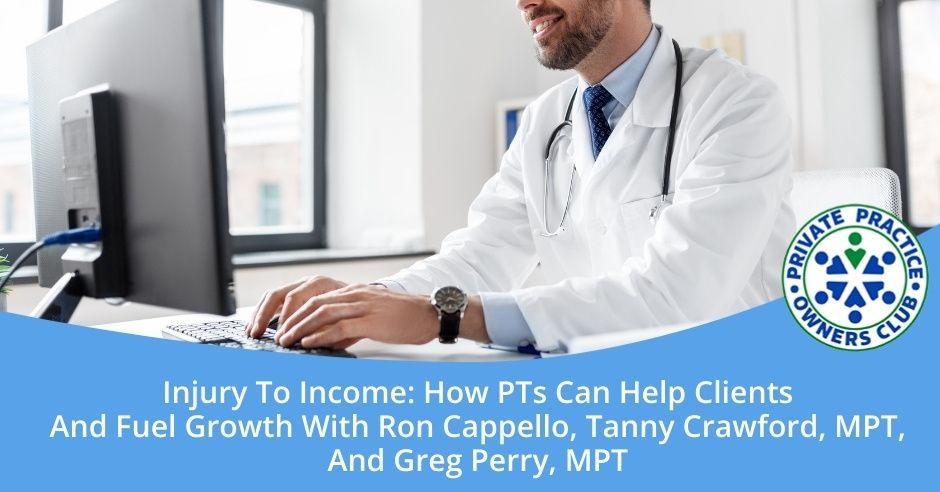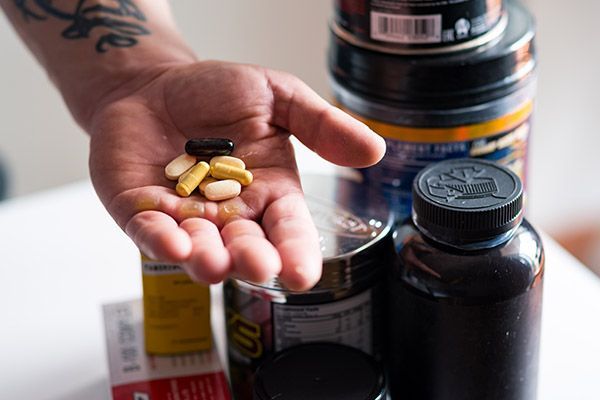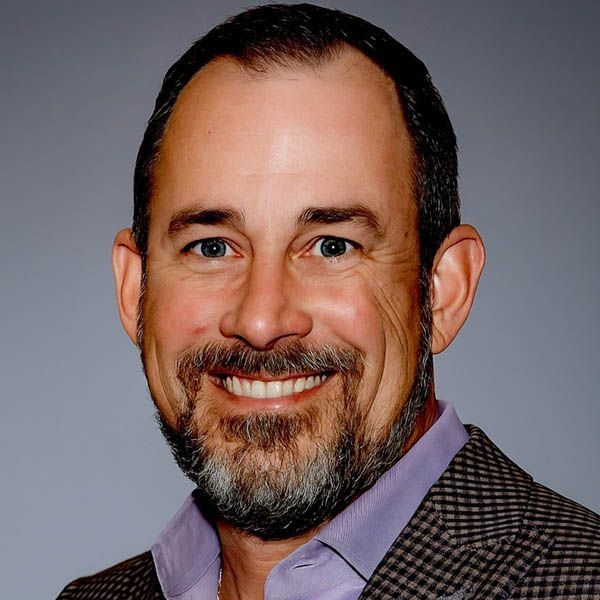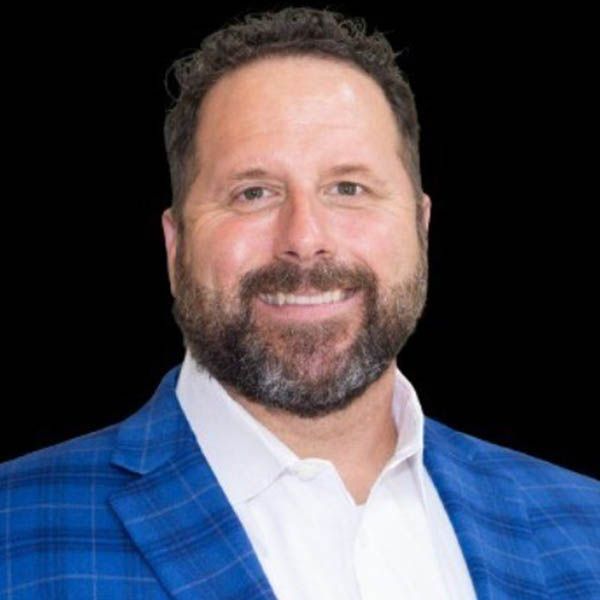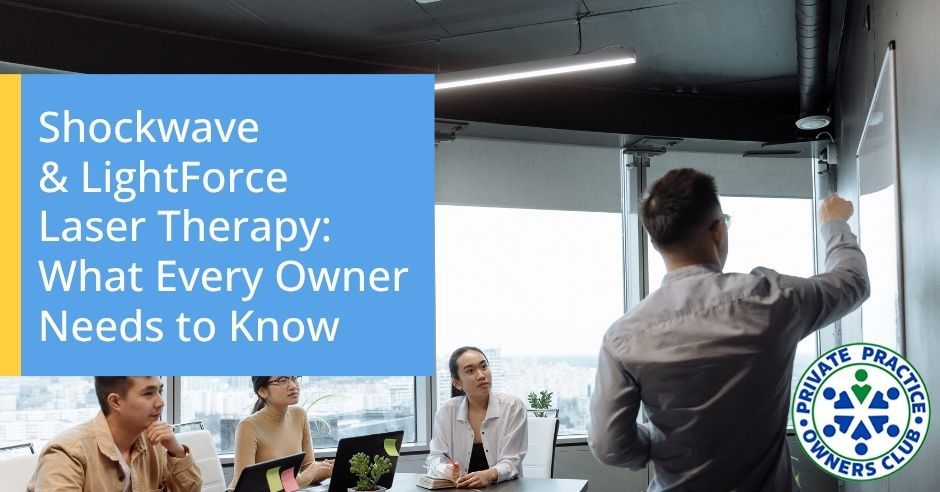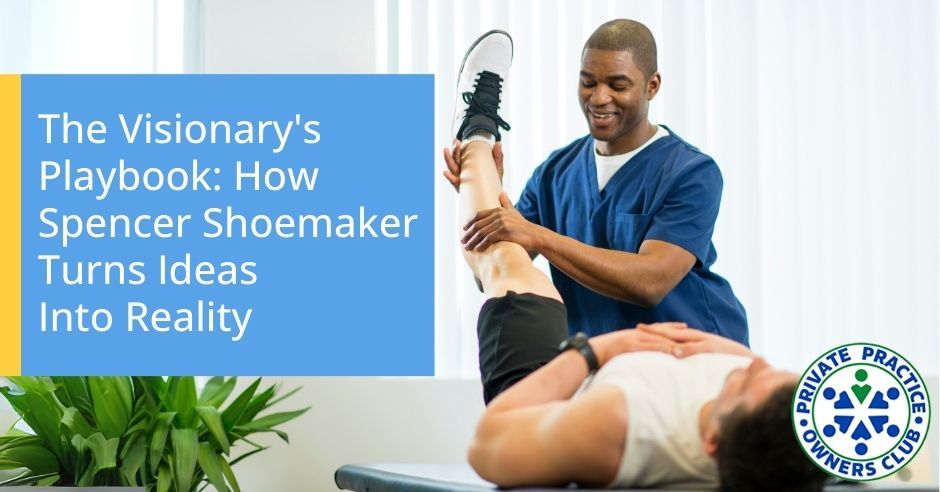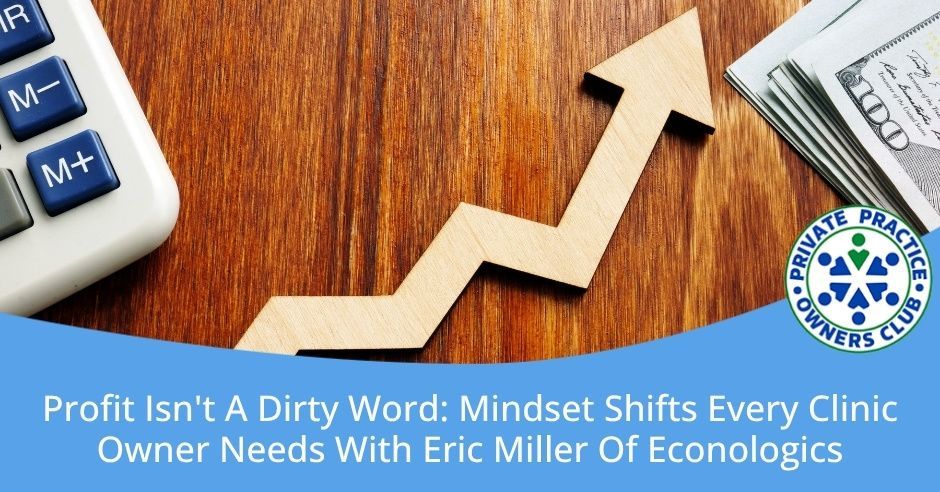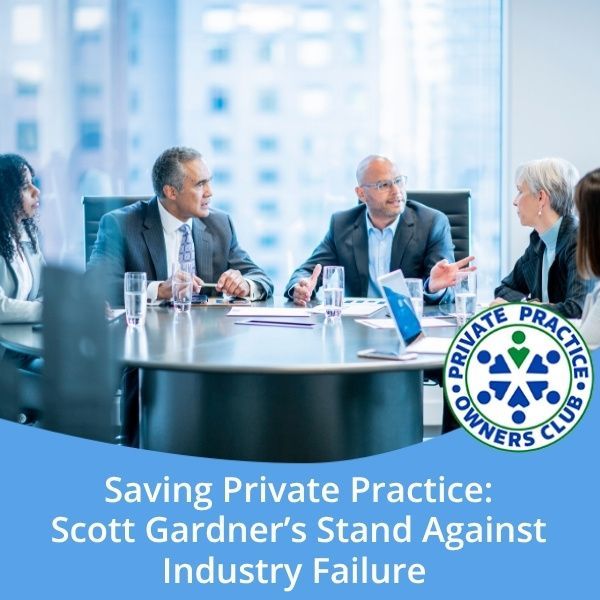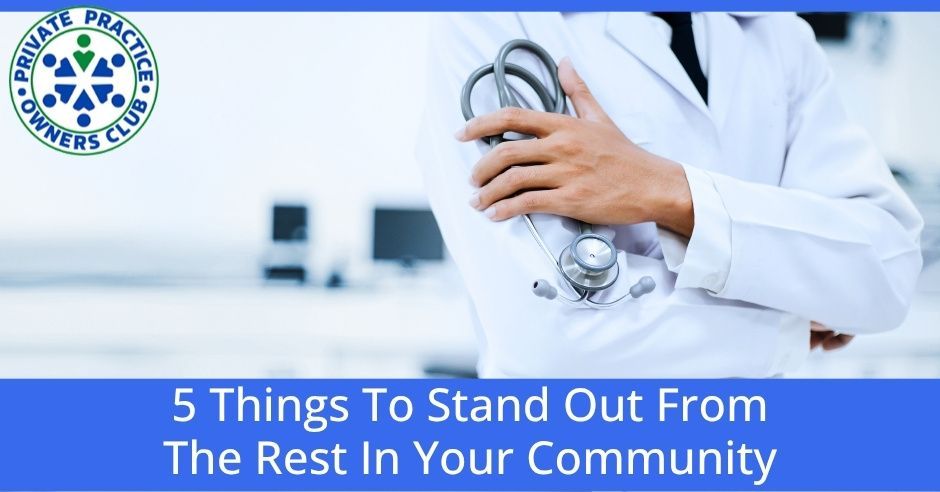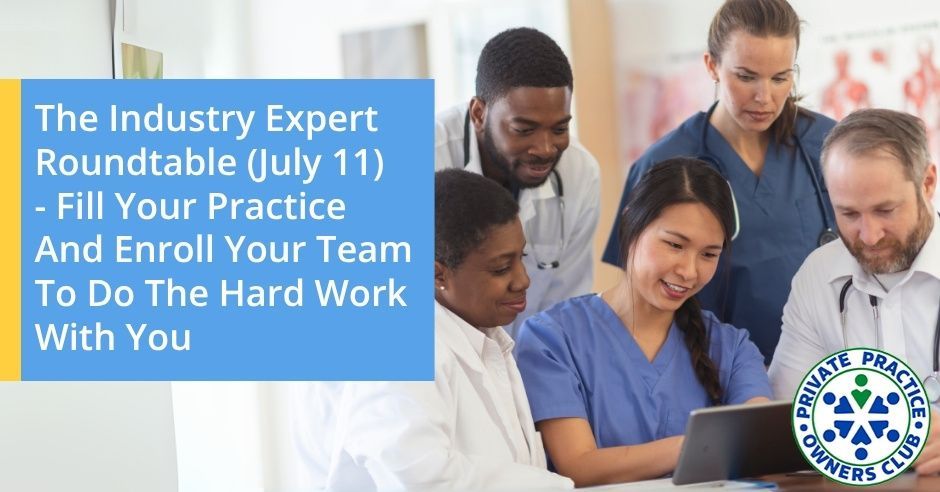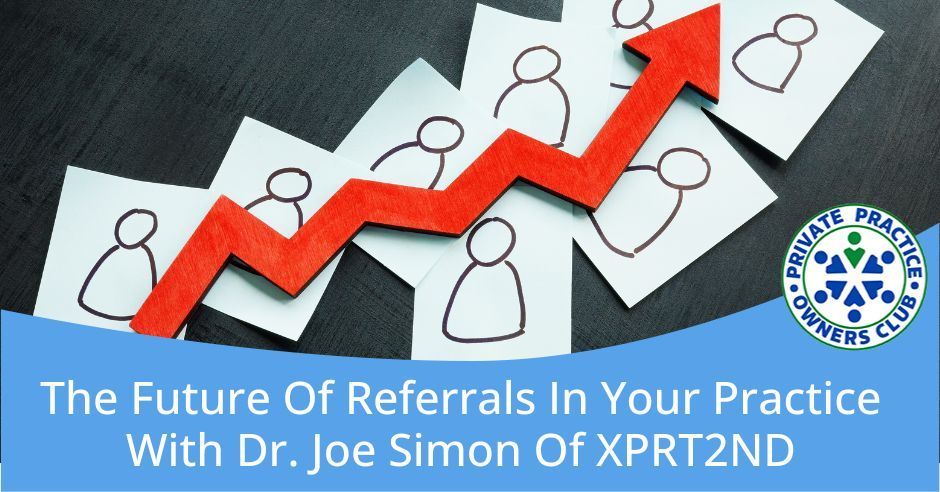Most private practice owners want to diversify revenue—but the thought of managing inventory, upfront costs, and admin headaches kills the idea before it starts. What if there was a way to add meaningful value for your patients and create a new stream of income, without adding work to your plate?
In this episode of the Private Practice Owners Podcast, Adam Robin sits down with the founders of
LASO Wellness—Ron Cappello (CEO), Tanny Crawford (Senior Advisor), and Greg Perry (Strategy)—to unpack a new model for bringing supplements and wellness products into private practices the right way.
They dive into:
● The “three no’s” that make this model a no-brainer: no capital, no admin burden, no inventory
● Why supplements are more about solving, not selling
● How recovery, sleep, gut health, and joint health products can accelerate patient outcomes
● Why nutritional guidance builds trust, compliance, and profitability
● How LASO’s done-for-you systems and field support make integration seamless
If you’ve ever wanted to boost revenue and patient results without piling more on your plate, this conversation will open your eyes to what’s possible.
🎙️ Learn how to add value, elevate patient care, and unlock new profits with zero risk.
👉 Explore more at
lasowellness.com and check the show notes for resources and links.
---
Listen to the Podcast here
Injury To Income: How PTs Can Help Clients And Fuel Growth With Ron Cappello, Tanny Crawford, MPT, And Greg Perry, MPT
We’ve got 3 knuckleheads on the show, 1 of them you know, and 2 of them you don’t know. These guys approached me with a pretty cool concept, a new startup called
LASO Wellness, where they’re providing unique value adds inside private practices. We will be talking about things that would be interesting for you guys, things that are going to help your patients, help improve the autonomy of your clinical team, and then also help you make some more money. I have Ron Cappello, CEO of LASO Wellness. What’s up, Ron? How are you?
It’s good to see you. How are you doing?
I’m doing fantastic. We also have the one and only Tanny Crawford, the Senior Advisor at LASO. What’s up?
It’s nice to be here.
We have Greg Perry. I believe you’re a physical therapist. Is that right?
I am.
Greg is going to be the strategy guy for LASO. It’s great to have you guys here.
Thanks for having us.
We’re glad to be here.
Where do you guys want to start?
The Genesis Of LASO Wellness: Solving PT Pain Points
I’ll kick it off and let everybody else fill it in. The idea behind LASO was born because I messed up my shoulder several years ago. I got to know my physical therapist well, and we became friends. I then had a client in the nutrition space. I put the two together. When I talked to Greg and Tanny about it, they said, “You’ve got a good idea, but you’ve got to make it as simple and painless as possible, or it’s not going to get any traction with PTs.”
I said, “How about this? How about three noes to get to a yes? The first no is no capital invested. The second no is no administrative burden. The third is no inventory.” Lo and behold, as we’ve talked to practitioners, they like that idea a lot. What we want to do is provide high-quality natural supplements manufactured by a very reputable firm in Long Island, a 52-year-old family-owned business that’s been a leader in the space.
In addition to that, each practice is provided with a QR code. The patient can order their supplements, and they’re delivered right to their door. That’s one half of the equation. The other half of the equation is being able to call upon a lot of experts, like the three of you, and provide additional value to a practice. Meaning, marketing expertise, business expertise, and ideas.
One of them is the eBook that you guys created with eight chapters. We designed it for you, but you guys wrote it from the perspective of a PT. You think about a two-sided coin. On the one side is product, easy to make a recommendation, and help the patient in their recovery process and beyond. The other side or the second side of the coin is a lot of value information, resources, etc. Those all lead to a better patient experience and a better bottom line. I’ll turn it over to Tanny and Greg, who are a lot smarter than I am about the topic. That’s the genesis of what we did.
Ron, you said no capital, no admin burden, which is a big one, and then no inventory. Tanny, how do you see it?
Diversifying Revenue Streams For Private Practices
Being part of the Private Practice Owners Club for the last couple of years, the mission that you guys started was to protect the independence of the practitioner, not pile on anything more, train delegation, empowerment, and profitability. LASO aligns with all those boxes to check because it diversifies revenue. Especially the cash-based practices throughout the US that I’ve talked to a lot are looking for another way. There are some that are selling branded apparel for yoga or Pilates. They’re selling branded TheraBand. They’re selling laser packages and dry needling packages. Why not nutrition?
You’re doing 100 visits a week, and you think, “There’s nothing else I need to add to my plate.” That’s true. There needs to be a couple of words delivered to the patient for nutrition. I’ve used this analogy. Greg and I were talking about this not too long ago. If you have a couple of guys at a job site, wanting to construct a house, and the lumber doesn’t show up, they can’t build and can’t frame that house. As PTs, we’re trying to repair rotator cuff tissue, muscles, tendons, and joints. If the material is not there, it’s not going to happen.
As PTs, we're training. We're trying to repair rotator cuff tissue—tendons, muscles, joints. If the material isn't there, it's not going to happen.
It’s almost like we haven’t paid a whole lot of attention to the nutritional side of physical therapy. We do the stretches. We do the strengthening. All you guys lift weights and work out. If you go and you work triceps one day, and then you don’t take in any extra amino acids or you take in 30 grams of protein a day, why do we think they’re going to repair and get stronger? I figured this does bridge that gap.
I started training for triathlons. I got into triathlon training. I did my first sprint triathlon, and it was terrible. It was brutal. I was like, “I want to get serious about this,” and started training like an athlete. It’s amazing how much more important recovery after the actual exercise is compared to doing the actual exercise. You can train and recover. You can do the mobility work and the strengthening, but at the end of the day, you’re providing a traumatic stimulus to the area, whether that’s neurologically-based or it could also be tissue breakdown.
The improvements don’t typically come during the activity. It comes when you recover from the activity. You've got to recover like a champion if you want to be a champion. If you want to be a great athlete, you have to recover like an athlete, too. I take my creatine. I take my fish oil. I supplement with my protein. I can tell you that I feel tremendously better. I tolerate exercise intensity a lot better when I manage my recovery well. Everybody understands that. If you’re a physical therapist, you know that that’s true, but we don’t do it for our patients for whatever reason. Greg, what do you think?
Why Physical Therapists Should Embrace Nutritional Supplementation
A couple of things. One hit when you said supplements. That’s what these are designed to do. We as practitioners, at the beginning of our specialty of physical therapy, have always recommended to patients to eat right. We were like, “Eat your protein. Eat your vegetables. Eat your fruits,” but we’ve never talked about supplementing that food intake, which is needed even more during recovery phases. I’m not as young as I once was. To your point, you’re doing training. We need supplements to help our bodies recover if we want to perform at an optimal level. We, as therapists, have lacked that, not because we don’t have the knowledge, but because we weren’t trained as much on that.
It’s 97110.
To hit on a couple of other things, I’m going to start at the beginning with something Ron said on the three noes. I won’t repeat them and bore anybody, but that was so key to this. In today’s world of physical therapy, it’s not like it was when I got out of school, when Tammy got out of school, or when Adam got out of school, and reimbursement was better. You didn’t have to work as hard. It is what it is. You can have a good practice. As busy as we are trying to run efficient practices, so many therapists go, “I don’t have time for anything else. I can’t spend more time on something.”
Or the money.
Or spend the money. The brainchild of it was genius, and I commend Ron on that. As we all sat down and started discussing the strategy, we were like, “We got a North Star. We got an avatar. What’s the strategy to get there?” Tanny may have been the first one to bring it up. He was like, “Therapists don’t like selling. They don’t want to sell things to their patients.”
This is not a sell. We don’t want this to be a sell. We don’t want to come to you and go, “Go sell these supplements to your patients.” It’s about solving an issue they have. It is solving versus selling. We say that all the time. We recommend to patients all the time how to sit, how to stand, how to pick up things, and what they should be eating. We’re like, “You smoke. You should stop smoking. You’re a tobacco user or dip user. You need to stop doing that.” It’s the same thing.
If it’s going to help that patient, then we, as practitioners, should advise them on that. It doesn’t mean everybody, but for the vast majority, this is going to help in their recovery. We should have that fiduciary responsibility to those patients to recommend it. That’s all you have to do, and Ron’s concept is we take care of the rest.
If it helps the patient, we as practitioners should advise them. It's about solving their issue, not selling.
The Gold Standard: Ensuring Quality And Ease With LASO Wellness
To that point, the advisory group that informed the manufacturing of this product included 3 PTs, 1 orthopedic surgeon, 1 ER doctor, 1 very renowned chiropractor, and 1 general physician. To your point, the first phase of the products that we’re delivering is as follows. Joint health, energy and circulation, sleep and recovery, to your earlier point, and gut health, which is a huge topic, particularly. The fifth category is general wellness. These are people who want a multi-type vitamin to supplement what they have.
This company is vertically integrated. They got into the business many years ago, sourcing the best natural ingredients from all over the world. They do everything at their plant. In addition to the supplements business that they have, they provide foodstuffs for hospitals for tube feeding for people who need that. They have a facility that has all kinds of certification qualifications.
In addition to the FDA, they have to meet all of the standards for hospitals and the foodstuffs that they create. Two times a year, the FDA is in there unannounced, doing inspections and stuff like that. One of the questions that PTs have asked us is, “Is this quality? How do I know that there’s no junk in this stuff?” We will guarantee the quality and the integrity of the product.
The one main thing that I think about is that most practice owners, every year, are trying to think about, “How can I squeeze out a little more revenue in the practice? How can I increase revenue by 5% this year?” 5% makes a big difference. I know that’s a topic that I’m always circling back to as a practice owner. One of those ways is to sell products. You could sell TheraBands, foam rollers, swag, and supplements.
I’ve looked at doing that, but honestly, I’ve never done that at a high level in my business. The main reason is that I don’t want to go and drop $5,000 on a product line of stuff that I don’t even know if I can sell. Who knows if I can get my money back from it? That’s one. I don’t want to store it. I don’t have any room, trying to squeeze out every square foot of my facility that I have.
For me, as an owner, from an owner perspective, not having to put up any money, store it, or manage it is a huge, “What’s the downside?” If that were the only thing that mattered, it would be a no-brainer. The only other thing that matters is the quality of the product and whether it helps the patient. If we can get those two things clear for the audience, I feel like it is a no-brainer.
The other thing I’ll tell you is that the ordering system, the backend for the eCommerce, is Shopify, which is probably the best-known backend. It provides all of the reports and all of the accounting. It provides, at the end of the month, a report to each practitioner, saying, “Here’s what’s happened. Here are the products. Here’s your check.” It provides for automatic deposits into an account. Everything is accretive. We’re providing not only the marketing material, the educational resources, videos, and the like as to how to do this work, but for the products, you can use your FSA or HSA money to buy them if the patient is so inclined.
We want to make it as easy as possible. For the practitioner, when they’re doing their initial assessment, we’re providing not a script pad, but a recommendation pad that you’ll have the different things. You, Adam, or Tanny can say, “You’re concerned about recovery. Let’s do this. You have a little bit of a gut issue. Let’s do that,” or, “We’re going to rehab your knee, so I want you to have this joint supplement to help in that process.”
The thing that’s important for your readers to understand is that the involvement with LASO doesn’t stop when you stop seeing the patient. We hope they’ll continue to take the supplements, and the participation on the revenue side continues going forward. It’s a cumulative effect. As you get more patients and more subscribers, the more money the practice is going to make.
That’s a great point, Ron. Adam, to your point about practices wanting to do TheraBand, foam rollers, swag, or whatever, there’s nothing wrong with any of that, but that’s a one-time sale. When you have a new patient, during their course of treatment, they buy whatever they buy, and that’s it. As Ron explained, this is more of an evergreen. It continues as long as the patient continues to see value and order their products.
The other thing that we’re doing to support particularly older patients, let’s call it 65 and older, is that there are wireless pill boxes or automated pill boxes where you can load up the supplements for a week. Each day, you take it. If you skip, it reports back to the practitioner, and the practitioner can say, “Mrs. Jones, I see you haven’t taken your supplements for a couple of days. It’s important that you do that.
Tell me what’s going on. Were you out dancing late last night, and you forgot to pick up this morning? What is it?” The whole remote treatment management is becoming seamless, wireless, easy, convenient, and not intrusive. That’s what we want. We want it to be almost a feeling of this service being ambient within the atmosphere of the practice and within the atmosphere of the home.
Unlocking Patient Compliance And Elevating Trust
I love it. Tanny, do you have anything to add there?
Dovetailing on that, as PTs, we’re in the evaluation. We talk to the patient about biomechanics, nerve roots, vertebrae, where the muscle inserts, and what a labral tear is. Why not give them nutritional guidance as well? We’re experts on how the body moves. It’s not about selling supplements. It’s a value add to them and explaining to them why minerals, nutrients, and protein are important.
We're experts on how the body moves; it's not about selling supplements. It's simply a value-add.
Those are the basic building blocks to repair what we’re doing, so it makes it easy. It’s not upselling or selling. That’s the first thing. I keep bringing that up because with everybody that we talked to, their first subconscious thought is selling, but it’s not. It’s a recommendation. It’s like, “We need to get a Strassburg sock because you’ve got plantar fasciitis.” It’s the same thing.
There was a quote, in fact, on Instagram from a nurse at Vanderbilt. It said, “Every time you eat or drink, you’re either feeding disease or fighting it.” It’s inflammation, lack of sleep, lack of protein, and lack of whatever. If we can combat those things, which we can, it works through giving them guidance, not selling.
Unfortunately, I hate to admit this, but I’m older than the three of you. I’ve had a 30-year career in branding, marketing, and messaging with a lot of great clients. The one thing that I’ve learned is this. At the end of the day, word of mouth is still the most powerful way to market something, sell something, and make a recommendation. That’s one.
The second thing is that credibility matters. When you are a healthcare professional and you have such an intimate relationship with someone where you’re helping them recover, helping them get back on their feet, or helping them get mobility, you have a high level of credibility. That matters. Don’t sell anything. Use your education and experience and say to the patient, “You don’t have to do this. It’s additive. What we’re talking about isn’t a lot of money, so it’s not like I’m asking you to take on something expensive.”
The other thing is, for many people, when they’re doing physical therapy, and this was particularly true for me, the physical therapist was meeting me at a moment when I needed that help. It’s an a-ha moment where you go, “Maybe it’s time for me to look at my overall condition and how I can, when I’m done visiting with this PT, carry that forward.”
Every time you eat or drink, you're either feeding disease or fighting it.
What I took from that was that most people aren’t sitting around thinking about the next supplement they can take. Tanny, you’re going to say this. You have 1,000 problems until you lose your health, and then you only have 1. It’s one of those situations. When they come to the PT, they’re interested in their health at that point. They’re like, “Tell me what I can do.” A large majority of those people would be willing to take supplements that we all know are useful if they were recommended by the doctor of physical therapy that they trust.
That’s right.
It makes you a trusted person. It elevates your trust. I can see how recommending taking a daily supplement is a great way to drive compliance because it’s an elevated commitment by the patient as well. They’re investing in their health outside of treatment by taking that supplement. There are a lot of great reasons to take that, in my opinion.
It’s a physical reminder. There’s a wonderful book called
Nudge. It talks about how to change behavior. If you hit somebody over the head, trying to get them to change their behavior, it’s not going to work. If you do a lot of subtle, small things, and that one little reminder on a daily basis of, “I was at the physical therapist. Now, I need to take that moment in the morning or the evening,” whenever you want to take these, that’s that elevated commitment to me. There’s this whole new area that’s growing called self-optimization. You guys have heard about that. Dr. Attia and Huberman, a PhD from Stanford, talk about this. People are beginning to say, “I have to be more responsible for myself.”
Be the CEO of your own health, right?
That’s right.
They’re saying, “It is so I can be a better mom, a better dad, a better husband,” or whatever you name it.”
Did you have something else?
No. I was in total agreement. Ron and the rest of our team are on to something here that is not just a great business and value add to the clinic. I know Tanny said this a while ago. This is a value add to the patients. Why would we not? I had a mentor say this to me a long time ago when I was early in my physical therapy career.
He said, “If your grandmother came in for treatment and she had a total knee replacement, would you do everything in your power and at your disposal to get her better?” We would all say, “Yeah, we would.” That’s how you need to treat everybody who walks in the door. If you would recommend supplements, protein, or a multivitamin to your grandmother or mother, then we should do that for all of our patients.
TB12's Playbook: Integrating Supplements For Optimal Recovery
Greg, I don’t think I’m speaking out of school here, but your experience in your career includes a stint working with Tom Brady and TB12. Can you expand a little bit about how TB12 addressed supplements and nutritional matters?
Probably everyone reading this knows who Tom Brady is. The vast majority probably know about his health journey, how seriously he takes his health, and how seriously he takes his recovery. He spends millions of dollars a year on his body. He can afford to, and I know everybody can’t. He was a huge proponent of supplements. He was a huge proponent of adding to where his diet can’t fulfill all the needs, especially during the season and during training when he is getting beat up.
For the people who don’t know what TB12 did, it was physical therapy with a little bit of a performance and training twist to it. We were like, “Why are we not taking what Tom does to the fullest?” We brought in a supplement line and would recommend it. It wasn’t every person that walked through the door, but it’s a huge percentage that could benefit.
What’s a little different there, and this is why I love this a little better, is that we had huge inventories. We had so much inventory because it was all ours. We didn’t have a company like LASO to go through. We had to make sure we had enough of every single item we sold on the shelf. When the patient finished, the therapist recommended that they need protein or whatever.
They write on a little script pad, like Ron talked about, or a recommendation pad, hand it to the patient, and the patient hands it up front. They buy it and walk out the door. It was taking that concept, which was wildly successful. Patients would come back after they were finished and buy more. They were walking in and buying more. We did start shipping, but those costs and that administrative burden were huge. That’s why how Ron has set this up is going to be so much more user-friendly for locations than we had at TB12.
Bridging The Gap: Nutritional Needs Across All Ages
Can you guys address the issue of the stage of life? A lot more young people are coming in, trying to throw a baseball as hard as they can from the time they’re 8 to 18. There’s the weekend warrior who’s trying to recover his youth at age 60 and doing something like that. As I’ve understood from all the experts, while they vary, regardless of the age or the condition, there’s usually some positive effect from supplementing, to your earlier point, a diet or a recovery discipline. Adam, I agree with you. I don’t think people pay enough attention to that rest and recovery period to not just heal, but to better themselves. That’s an open question to any one of you as practitioners.
Forgive me. I haven’t treated patients in a while, but the thing about these patients is that most of them are in some type of acute or chronic inflammatory state. Not all of them, but most of them would need support more than somebody who’s generally healthy or who’s training for a triathlon. Their body is craving some type of resources to heal. For those reasons, it seems like they would be uniquely positioned to benefit from some type of advanced nutrition or supplementation. Forgive me. I’m not a scientist, and I don’t have a bunch of literature behind that, but that’s the way that I’m thinking about this. Greg, did you have more to add there?
Yeah. I agree. The only thing I would add is even your general athlete that’s in good shape, if you will, or condition, think post-surgically. Almost anybody who has gone through surgery is going to be craving the same thing. That’s one thing to add.
People are like, “I’m sold.” Practice owners are sold. Now what? How do they get started? What would you advise them to do from this point?
Let me jump in on that. When Ron started telling me about this, one of the biggest things besides nutrition, patients, and revenue is that LASO does the heavy lifting for the PTs. It’s not like, “Here’s your QR code. Order the nutrition and go,” and that’s it. LASO has built-in nutrition scripts and plug-and-play resources. There’s ongoing support. PTs don’t have to reinvent anything. QR code displays are set up. There are sample conversation starters, email templates, and even ideas on how to integrate nutrition into your eval talk. It’s not like they’re handing you a supplement and saying, “Go.” It’s a value-add system. It’s almost like PPOC’s vault.
That’s huge. I could see that being a big value add for owners. Especially if you have a team of five, six, ten, or twelve, there’s a burden of, “How am I going to get this rolled out?” It’s helpful to have that.
We will have, in each market, a field force of people to go set up some display-like things, some materials, and the recommendation pads. That field force will visit once a month to make sure everything is in order, answer any questions, and all of that.
We want to be a new line of business support system. To your earlier question, they can go to
LASOWellness.com and see the first version of our website. We have a new version of our website, but the first version is enough for them to go sign up for some things and begin to see the resources that we’re starting to provide. We’ve got an eBook. We’ve got a PDF of eight briefings around the products themselves.
We are developing a strategy for recommending, “What’s the issue? Here’s the product. Here are the ingredients of the product,” and answering that question, “Why are you recommending this?” We’re like, “We are recommending this because it helps to be an anti-inflammatory. We are recommending this because it helps with gut health. We are recommending this because here are the ingredients in these particular supplements that are going to help you with sleep and recovery.”
I hate using this word because everybody’s bastardizing it, but we want to be both transparent and fully engaged behind the scenes and not interrupting anybody’s business life or their interaction with the patient. It’s that idea of ambient assistance. We’re so excited because we’ve got the right group, the right manufacturer, the right backend with Shopify, and the right pick, pack, and ship folks. The marvel of the digital age is that you can tell people it will be seamless, and it will be seamless. Amazon has set that expectation.
They set the bar.
They set the bar as to what you’re going to get and how quickly you’re going to get it. You can track it and know it’s on a truck to your house.
I know we talked about an eBook and a website. Any information that we have, we’ll make sure that people have access to all of that so they can go and check it out. When does this roll out? What should the readers expect?
What they should expect is this. We are signing up practices. The reason why we’re not introducing the product is that we are continuing to get feedback from those who are signing up, as well as advice and counsel as to what they need and what they want. With that said, by the end of October 2025, we will have the product in the practices and be available. We’re purposefully going slowly and deliberately because it’s not what I want. You get it.
I understand.
What do the practitioners want? What is the daily routine of that practice? How can I, on the one hand, make it easy, and on the other hand, make an exceptional experience for them and the patient? That’s our role. We support and educate. It’s that simple. I’m a simple person, so I want to try to keep it nice and easy.
Tanny, any last words?
I want to thank you very much for having us on. It’s been wonderful. We’ll also catch up with a follow-up as well.
We’ll catch up whenever you guys are ready. It’s interesting to hear what you guys are doing. There are not a lot of people in this space doing anything like this, so it’s going to be transformative. Greg, you got anything?
To echo Tanny, I appreciate the time. I always love getting together with some fairly like-minded folks. I do think this is pretty cool, so it’s fun to talk about.
The Future Of LASO Wellness: What To Expect Next
I will drop all the information if any of you guys want to reach out through the emails, ask questions, get on board with this, and get the information that you need to make a decision on whether this is going to be right for you whenever you’re ready to move forward. Thank you.
Important Links
About Greg Perry



